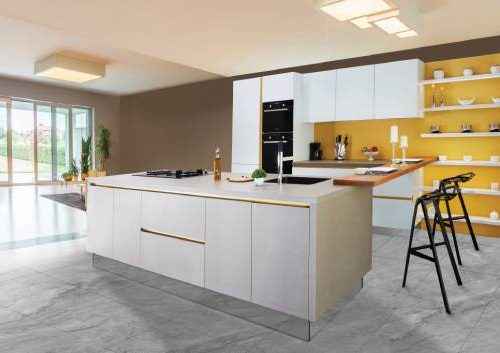You’re ready to transform your outdated kitchen into a stunning space that’s both functional and beautiful, but where do you start? From assessing your lifestyle needs to selecting the perfect materials and appliances, the kitchen renovation process can be overwhelming. You’re not alone – many homeowners in Derry struggle to bring their kitchen vision to life. But what if you had a roadmap to guide you through every stage of the process, from planning to execution? With the right guidance, you can create a kitchen that not only reflects your personal style but also increases your home’s value. I need your best service on this for future work too..
Planning Your Dream Kitchen
As you embark on the journey of creating your dream kitchen, take a step back to consider the big picture.
Assess your lifestyle, habits, and priorities to determine what you need from your kitchen. Think about how you’ll use the space, who’ll be cooking, and what type of meals you’ll be preparing.
Consider the layout and flow of your kitchen, taking into account the “work triangle” concept, which positions the sink, stove, and refrigerator in a triangular formation to optimize efficiency.
Next, define your style and preferences.
Do you lean towards modern, traditional, or a mix of both? What color schemes and textures appeal to you?
Collect inspiration from various sources, such as magazines, websites, or social media, to get a sense of what resonates with you.
Make note of the must-haves, nice-to-haves, and any specific features you’re willing to compromise on.
Choosing the Right Materials
With your kitchen’s layout and style in mind, it’s time to think about the materials that will bring your design to life.
You’ll want to choose materials that not only fit your aesthetic but also meet your functional needs and budget. For countertops, consider durable options like quartz, granite, or solid surfaces. If you’re looking for something more budget-friendly, laminate or butcher block might be the way to go.
When it comes to flooring, think about the traffic your kitchen gets and choose a material that can withstand it.
Hardwood, tile, and laminate are all popular options. Cabinets can be made from a variety of materials, including wood, medium-density fiberboard (MDF), or thermofoil.
Consider the look and feel you want to achieve, as well as your budget, when making your decision. Don’t forget about the details, like hardware and lighting fixtures, which can greatly impact the overall look of your kitchen.
Designing Your Kitchen Layout
Designing your kitchen layout is a crucial step in creating a functional and efficient space.
You need to consider how you’ll move around the kitchen, where you’ll place your cooking station, and how you’ll utilize your available space.
Start by thinking about your workflow – where do you prep, cook, and clean?
Identify the “zones” in your kitchen and allocate space accordingly.
The “golden triangle” concept is a great starting point, where your sink, stove, and fridge form the three points of a triangle to minimize walking distances.
Consider the “workstations” in your kitchen, such as a food prep area or a coffee station.
Think about the countertops, cabinets, and drawers you’ll need to support each station.
Don’t forget to leave enough clearance between countertops and appliances for comfortable movement.
Measure your kitchen carefully, taking note of any obstructions like plumbing or electrical fixtures.
With a clear vision of your kitchen layout, you’ll be able to create a space that’s both beautiful and functional.
Selecting Essential Appliances
Your kitchen appliances are the workhorses of your culinary space, and selecting the right ones is crucial to creating a functional and efficient kitchen.
You’ll need to consider your cooking habits, the size of your kitchen, and your budget when choosing appliances. Start by identifying the essential appliances you need, such as a refrigerator, oven, and dishwasher.
Consider energy efficiency, as it can save you money in the long run.
When selecting a refrigerator, think about the size and type: top-freezer, bottom-freezer, or side-by-side.
Ovens come in various sizes and types, including gas, electric, and induction.
Dishwashers range from compact to full-size, with varying features like quiet operation and sanitizing cycles.
You may also want to consider additional appliances like a microwave, toaster, or stand mixer.
Be sure to research and compare different brands and models to find the best fit for your needs and budget.
Managing the Renovation Process
Managing the Renovation Process
Frequently, homeowners underestimate the complexity of a kitchen renovation, only to find themselves overwhelmed by the sheer number of decisions and tasks involved.
You’ll need to juggle multiple aspects, from design and materials to permits and timelines. To stay on top of things, create a detailed project schedule and budget breakdown. Set realistic milestones and contingencies to accommodate unexpected delays or cost overruns.
You’ll also need to coordinate with various professionals, such as architects, designers, and contractors.
Establish clear communication channels to ensure everyone is on the same page. Regularly inspect the work in progress to catch any potential issues early on. Don’t be afraid to ask questions or raise concerns – it’s your kitchen, after all!
Conclusion
You’ve got a clear vision of your dream kitchen, and with this guide, you’ve got the know-how to make it a reality. You’ve assessed your lifestyle needs, chosen the perfect materials, designed a functional layout, and selected the essential appliances. Now, it’s time to put your plan into action. Stay focused, manage the renovation process with ease, and before you know it, you’ll be cooking up a storm in your brand-new kitchen!

